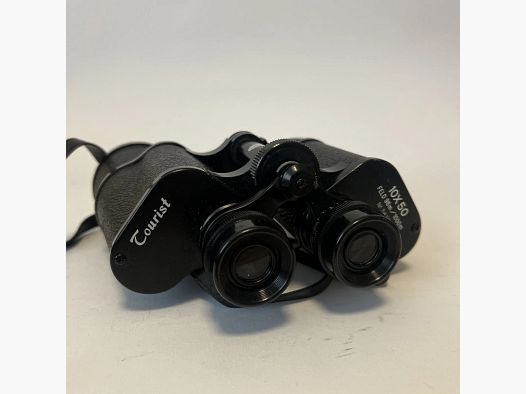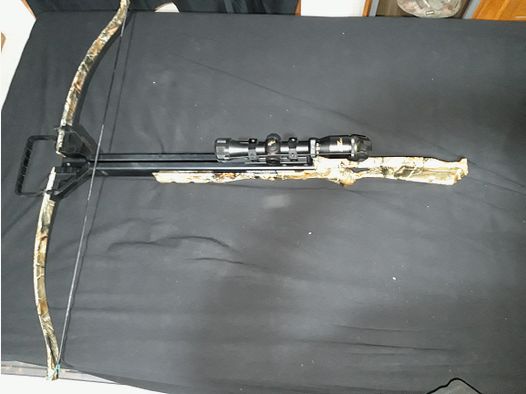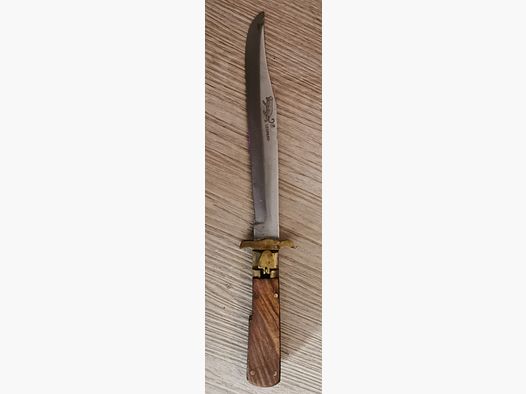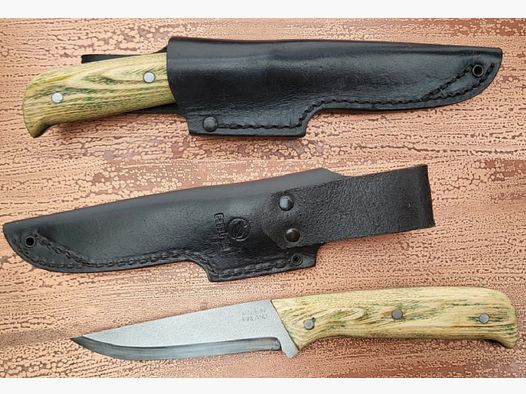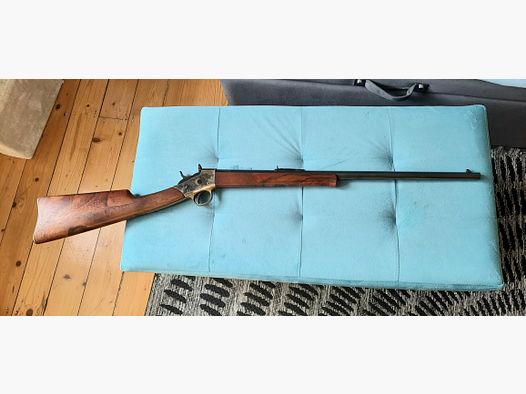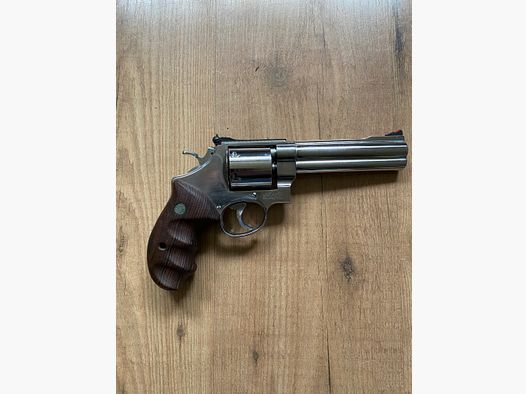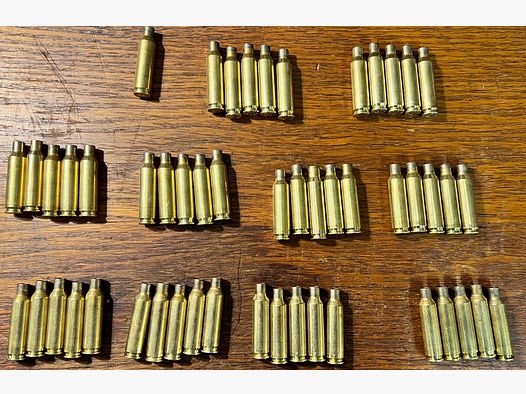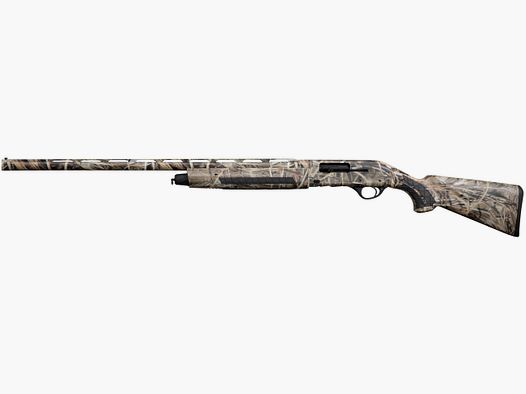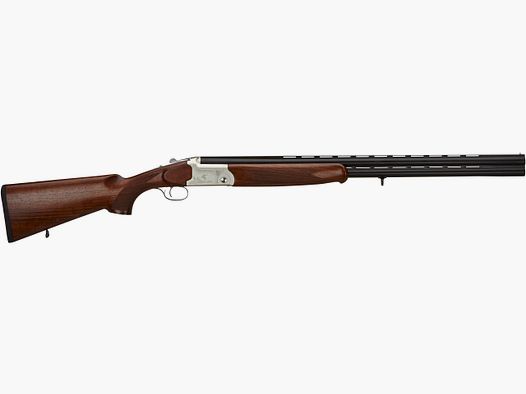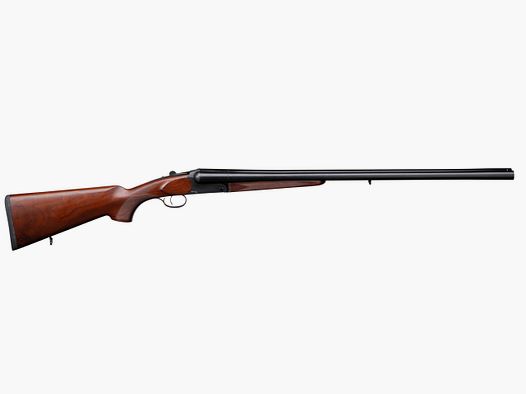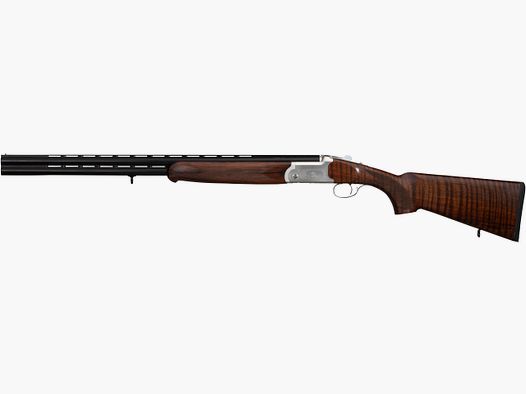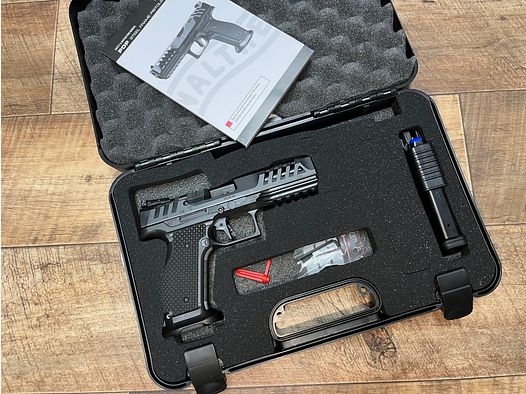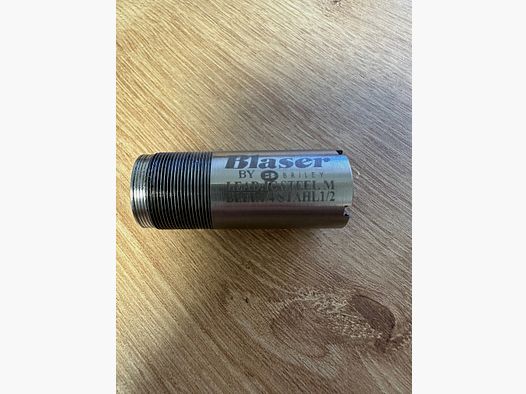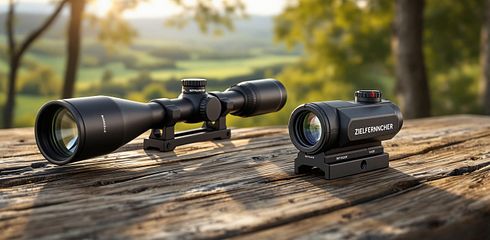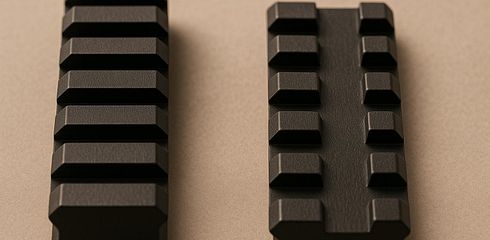If you are looking for accessories for your weapon, you face the choice: Picatinny or Weaver? Both rail systems offer advantages and disadvantages, depending on your intended use. Here are the key differences:
- Picatinny: Robust, standardized dimensions (slot width 5.23 mm, spacing 10 mm), ideal for heavy accessories and frequent changes.
- Weaver: Lighter, slot width 4.57 mm, non-standardized spacing, suitable for light hunting gear.
Quick decision aid:
- For tactical applications or heavy equipment: Picatinny.
- For light, permanent mounts: Weaver.
A close look at dimensions, stability, and accessory compatibility will help you make the right choice.
Quick Tip: Picatinny vs Weaver Rail - What's the Diff?
Weaver Rail: Design and Application
The Weaver rail, named after William Ralph Weaver, was developed in the 1930s to provide a simple and reliable solution for precision mounts in hunting. This concept quickly established itself as a standard in the hunting field.
The characteristic dovetail design with rounded slots gives the Weaver rail its flat profile. This construction meets the needs of hunters who value a lightweight and unobtrusive design. The technical details show how the design of the Weaver rail is specifically tailored to traditional hunting needs.
Technical Specifications
The Weaver rail has a slot width of 4.57 mm (0.180 inches), a measurement that has remained unchanged since its introduction. Its slimmer design compared to the Picatinny rail makes it lighter but limits compatibility with modern accessories. A notable difference lies in the variable arrangement of the slots: The spacing between the slots is not standardized and can vary from manufacturer to manufacturer. Since the rail was originally designed for mounting a single scope, this flexibility was not a problem for a long time.
Aluminum is the preferred material as it is lightweight and corrosion-resistant. For higher loads, there are also steel variants, which are heavier. The low profile of the Weaver rail also contributes to weight reduction.
| Specification | Weaver Rail |
|---|---|
| Slot Width | 4.57 mm (0.180 inches) |
| Slot Spacing | Variable, non-standardized |
| Profile | Rounded, low design |
| Main Material | Aluminum (partly steel) |
| Compatibility | Limited by variable spacing |
These features make the Weaver rail particularly suitable for classic hunting applications.
Typical Applications
The Weaver rail is primarily used in traditional hunting. Its characteristics make it the preferred choice for classic hunting rifles and lightweight optics.
The rail is excellent for traditional bolt-action rifles like the Remington 700 and lightweight optics, including 1-inch scopes, compact red dot sights, or simple reflex sights. Especially hunters who want to save every gram of weight on multi-day stalks benefit from the lightness of the Weaver rail.
Sports shooters who prefer a classic aesthetic also often rely on this system, as it preserves the original handling of the weapon. However, the rail shows its limits with heavier tactical accessories or frequent accessory changes. Modern night vision devices or large scopes with heavy lenses can overwhelm the stability of the Weaver rail.
Picatinny Rail: Design and Application
The Picatinny rail, known as MIL-STD-1913, was developed in the 1990s by the US military and is named after the Picatinny Arsenal of the US Army. Its main purpose? To provide a standardized and robust mounting rail suitable for a variety of accessories such as optics, aiming aids, and tactical equipment.
Compared to the more flexible Weaver rail, the Picatinny version impresses with precision and stability. Its angular, square profile with sharp edges is specifically designed to withstand extreme temperatures and high loads. The technical accuracy is reflected in every detail of its construction.
Technical Specifications
The Picatinny rail features standardized dimensions that ensure a stable and universal mounting. With a slot width of 5.23 mm (0.206 inches), it is wider than the Weaver system. The uniform spacing of 10 mm (0.394 inches) between the slots prevents any issues caused by variable spacing. Additionally, a slot depth of 3.00 mm ensures a secure hold—even under heavy recoil. Its angular profile with sharp edges minimizes the risk of accessories slipping, even under extreme conditions.
| Specification | Picatinny Rail |
|---|---|
| Slot Width | 5.23 mm (0.206 inches) |
| Slot Spacing | 10 mm (standardized) |
| Slot Depth | 3.00 mm |
| Profile | Angular, square |
| Main Material | Aluminum/Steel |
| Compatibility | Universally standardized |
The material also plays a crucial role. Aluminum offers low weight and high corrosion resistance, while steel provides maximum stability. This choice of material, combined with the greater profile strength, makes the Picatinny rail extremely durable and ideal for heavy tactical accessories.
Typical Applications
The Picatinny rail is an essential element in military and tactical applications, where reliability and versatility are of utmost priority. In the Bundeswehr and other NATO partners, it is part of the standard equipment for assault and precision rifles. There, it allows for the secure and quick mounting of heavy night vision devices, aiming optics, or laser aiming aids. Precision rifles also benefit from the stable base for scopes, thermal imaging cameras, and other attachments.
In the sporting sector, the Picatinny rail is appreciated for its universal compatibility. Sports shooters can quickly change accessories without losing zero. It is also increasingly used in modern hunting, especially with heavy optics or specialized equipment such as rangefinders and night vision attachments.
On Gunfinder, you can discover a wide selection of Picatinny rails and compatible accessories. Compare prices, search for suitable mounting systems, and buy or sell securely—both new and used items.
sbb-itb-1cfd233
Direct Comparison: Picatinny vs. Weaver
The comparison between Picatinny and Weaver rails shows clear differences that can be crucial depending on the intended use. Both systems have their justification, but in direct comparison, specific advantages and limitations emerge that affect the mounting and function of your accessories.
Dimensions and Specifications
A central difference lies in the slot width: Picatinny rails measure 5.23 mm here, while Weaver rails measure 4.57 mm. This difference of only 0.66 mm, however, has significant implications for compatibility. Even more important is the slot spacing: Picatinny rails are equipped with a standardized spacing of 10 mm, while this is not standardized and therefore variable for Weaver rails.
| Specification | Picatinny | Weaver |
|---|---|---|
| Slot Width | 5.23 mm | 4.57 mm |
| Slot Spacing | 10 mm (standardized) | Variable (non-standardized) |
| Slot Depth | 3.00 mm (standardized) | Usually flatter, inconsistent |
| Profile | Angular, square | Rounded, lower |
| Load Capacity | Very high | Limited with heavy accessories |
The standardized slot depth of 3.00 mm in Picatinny rails ensures an extremely stable attachment, even under demanding conditions. Weaver rails, on the other hand, with their flatter and inconsistent slots, offer less hold. Additionally, the profiles differ: Picatinny rails have an angular, square design, while Weaver rails have a rounded and lower profile.
Accessory Compatibility
Another important point is the compatibility of accessories. While Weaver accessories often fit on Picatinny rails—though not always with optimal hold—Picatinny accessories cannot be mounted on Weaver rails due to the wider attachment lugs. This means that users of Weaver rails are limited in their choice of accessories. With a Picatinny rail, however, you have the option to use both Picatinny and many Weaver components, making it more flexible and future-proof.
Weight and Stability
Picatinny rails are heavier than Weaver rails due to their robust construction. This weight difference is relatively small for shorter rails but becomes more pronounced with longer systems. The stability of the Picatinny rail is a significant advantage, especially with heavy accessories or strong recoil. Thanks to the precise and standardized construction, the accessories remain securely and reliably in place even under extreme conditions. So, the question for you is whether you prefer a lighter system like the Weaver rail or rely on the stability and robustness of the Picatinny rail.
On Gunfinder, you can discover a variety of Picatinny and Weaver rails from different manufacturers. Compare weight, material, and prices to find the system that best meets your needs—whether for hunting or sport.
Which Rail System to Choose?
The decision between Picatinny and Weaver rails largely depends on what you intend to use them for. Your choice can significantly affect the performance of your equipment. Let’s take a look at which system excels in various application areas.
For Tactical Applications and Heavy Equipment
The Picatinny rail scores with its standardized dimensions (5.23 mm slot width, 10 mm spacing, and 3.00 mm slot depth) as well as an angular profile that provides a secure hold even under heavy recoil. This robust construction creates a stable and reliable base for mounts. Thanks to the angular slot profile, accessories remain in place even under extreme conditions, ensuring that the zero point is not lost.
For Light Hunting Gear
Weaver rails are characterized by their slim and lightweight design, making them ideal for classic hunting rifles and long stalks. With a slot width of 4.57 mm and variable spacing, they offer flexible mounting that harmonizes particularly well with traditional and lighter hunting optics. Additionally, they are often cheaper, making them attractive for recreational hunters who do not require military robustness.
For Frequent Accessory Changes
The standardized design of the Picatinny rail allows for quick and flexible changes of accessories without compromising fit. Conveniently, Weaver accessories can also be used on Picatinny rails, giving you access to a broader range of equipment. This makes it easy to switch between different optics, lights, lasers, or other tactical devices without needing additional adapters.
On Gunfinder, you will find a large selection of accessories compatible with Picatinny and Weaver rails. With the practical filtering options, you can find exactly the system that meets your requirements—whether for hunting, sport, or tactical applications.
Final Decision: The Right Rail System for Your Needs
Now that you know the technical details, it’s time to choose the right rail system for your requirements. Each system has its strengths—what matters is to honestly assess your needs.
Picatinny rails excel with their standardized construction (5.23 mm slot width, 10.01 mm spacing) and are particularly versatile if you frequently change accessories or use heavy equipment. The robust construction ensures that the zero point remains intact even under heavy recoil.
Weaver rails, on the other hand, are lighter and simpler, making them ideal for traditional hunting rifles. Especially if you want to mount an optic permanently, this option makes sense. For a slim, lightweight setup without frequent changes, Weaver is often the more practical choice.
Another point is accessory compatibility: Picatinny rails offer a wider selection of accessories due to their standardized dimensions, but these parts are often more expensive. On Gunfinder, you can find price-performance comparisons between both systems.
To find out if Picatinny is the right choice for you, answer these questions with “Yes”:
- Do you regularly change your accessories?
- Do you use heavy equipment and need maximum stability?
- Do you value a wide selection of compatible accessories?
If you answer these questions negatively, Weaver might be the better, more cost-effective alternative. Consider what is more important to you and make your decision accordingly.
FAQs
What advantages does a Picatinny rail offer compared to a Weaver rail for mounting accessories?
The Picatinny rail stands out with its standardized construction, which provides uniform slot widths and fixed distances between the cross slots. This makes it compatible with a wider range of accessories.
In contrast, Weaver rails can have different dimensions, which limits the selection of compatible accessories.
If you are looking for maximum versatility for mounting scopes, lights, or other accessories, the Picatinny rail is generally the better option.
Why is the Picatinny rail better suited for tactical applications than the Weaver rail?
The Picatinny rail impresses with its standardized design and precise dimensions, making it particularly attractive for tactical applications. Thanks to the uniform and standardized mounting slots, it is compatible with a variety of accessories such as scopes, grips, or lights. This not only facilitates mounting but also allows for quick accessory changes.
The Weaver rail, on the other hand, also has mounting slots, but these can vary by manufacturer. This often leads to compatibility limitations. Therefore, those who rely on maximum flexibility and reliability typically opt for the Picatinny rail.
Can I use accessories with Weaver mounting on a Picatinny rail?
Yes, in most cases, accessories with Weaver mounting can be used on a Picatinny rail. However, there are small but important differences: The slots of the Picatinny rail are wider and standardized, while those of the Weaver rail can vary. This can occasionally lead to problems, especially with older or custom-made accessories.
If you are unsure whether your accessories fit, you should check the measurements beforehand or contact the manufacturer directly. This way, you can ensure that everything works smoothly.
